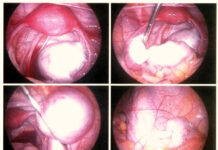New survey shows two out of five GPs unde restimate the prevalence of FH
Sanofi UK, with the endorsement of HEART UK-The Cholesterol Charity, has today launched a new campaign to help break family cycles of early heart disease and death from Familial Hypercholesterolaemia (FH). Heart of the Family aims to increase awareness of FH to encourage earlier diagnosis and testing of family members as prompt diagnosis and appropriate treatment can help save lives.
FH is a treatable, genetic condition characterised by abnormally high cholesterol levels from birth, which affects approximately 1 in 500 people in the UK; about the same number of children and young people under 19 years old are affected by type 1 diabetes. However, 85% of people with FH remain undiagnosed and untreated, putting them at increased risk of premature heart disease and death. A new online survey of 150 UK GPs, commissioned by Sanofi, shows that two out of five (39%) under-estimated the prevalence of FH and a further third (33%) recognise that there is a need for increased awareness among GPs.
“FH is a silent assassin and too often goes undetected until it’s too late,” said Dr Sarah Jarvis, GP and past chair of the Healthcare Committee at HEART UK. “The Heart of the Family campaign aims to drive earlier diagnosis, testing and appropriate treatment to ultimately save lives from preventable heart disease.”
Jules Payne, Chief Executive of HEART UK – the Cholesterol Charity said: “FH is an inherited condition which leads to exceptionally high cholesterol levels, often double or three times those of the general population. It is not caused by an unhealthy lifestyle, but is passed from generation to generation through a “faulty” gene. Early diagnosis and effective treatment reduces the risk of heart disease and can help ensure that people with FH have a normal life expectancy.”
According to the GP survey, although approximately two thirds of GPs (68%) said they feel somewhat confident about identifying FH, many were unclear about who to refer for testing and when. Only just over half (53%) would refer patients and their first generation relatives for confirmation of diagnosis and DNA testing. This dropped to less than one in ten (7%) for second generation relatives and just 1% would refer third generation relatives. In addition, only one in five GPs surveyed (20%) correctly identified that children who may have FH should be tested before age 10.
The clinical indicators of FH include abnormally high cholesterol levels, a family history of high cholesterol or early heart disease and in some cases fatty deposits that can appear under the eyes or in the eyelids. Most people with FH have inherited a defective gene from at least one parent and therefore will have had high cholesterol levels from birth.
Dr Sarah Jarvis explains: “FH is not caused by an unhealthy lifestyle, but is passed from generation to generation through a faulty or altered gene. Siblings and children of someone with FH have a 50% risk of inheriting it themselves, but it can also affect second and third generation relatives, so it is therefore vital that family members are tested for FH as early as possible.”
If left untreated, approximately 50% of men and 30% of women with FH will have developed heart disease by the time they are 50 and 60 years old respectively due to a life-long exposure to high cholesterol. Following a diagnosis of FH, treatment includes prescription of cholesterol-lowering medications along with dietary and lifestyle advice.
“Preventing premature heart disease and death, which can devastate families across generations, is possible if FH is diagnosed and treated early,” said Dr David Williams, Medical Director, Sanofi. “That’s why we want to encourage people to be aware of FH and ensure they know their cholesterol levels.”
Help keep news FREE for our readers
Supporting your local community newspaper/online news outlet is crucial now more than ever. If you believe in independent journalism, then consider making a valuable contribution by making a one-time or monthly donation. We operate in rural areas where providing unbiased news can be challenging. Read More About Supporting The West Wales Chronicle























